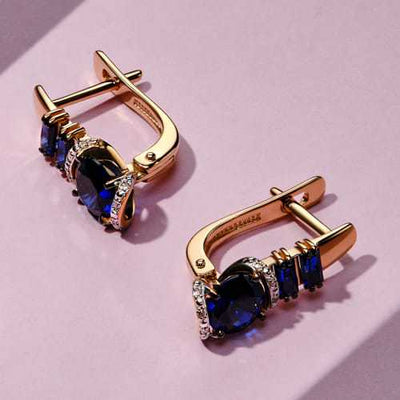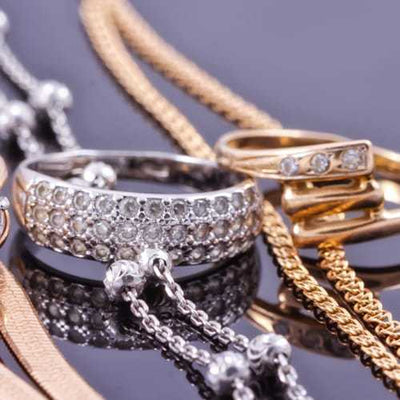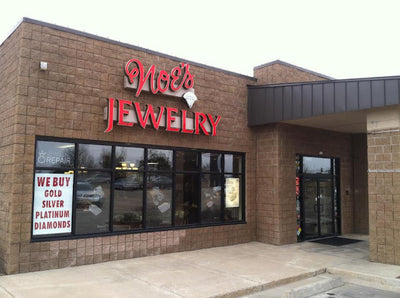Diamonds are the best-known gemstones in the world. They are highly desirable based on their beauty and value. While many people know a little about these unique gemstones, not many people truly understand what a diamond is or how to care for it properly. Noe's Jewelry has created this handy guide to help you learn all you need to know about the brilliant diamond.
What Are Diamonds?
Diamonds are pure carbon, which makes them the purest of all gemstones. These pure carbon stones are formed under extreme temperature and pressure conditions that can only be found 100 miles beneath the earth's surface. What makes diamonds unique is that all carbon atoms are bonded in essentially the same way in all directions.
This uniformity isn't the case for graphite, which is also a rock made of only carbon. While diamonds are hard, graphite is soft enough to be used to write with.
While diamonds are most commonly used in jewelry, they can also be used in industrial settings.
Types of Diamonds
For the most part, diamonds don't have types. Instead, they are categorized by color. Here are the colors of diamond gemstones:
- White Diamonds: White diamonds are the most common. These are the diamonds that are frequently associated with wedding and engagement jewelry.
- Black Diamonds: Black diamonds get their coloration from a large number of impurities called mineral inclusions. These inclusions can be caused by graphite, pyrite, or hematite.
- Salt and Pepper Diamonds: These diamonds get their name from the black and white marks that fleck throughout the stone.
- Gray Diamonds: Gray diamonds get their coloration from increased hydrogen or baron levels during their formation. Different hues and intensities of the gray color are possible.
- Yellow Diamonds: Yellow, or canary, diamonds range significantly in the shade of yellow. The more yellow the diamond, the more expensive it will be. Yellow is the second most common naturally occurring color of diamonds. Diamonds appear yellow with the presence of nitrogen gas.
- Orange Diamonds: Orange diamonds come in many different shades. They range from fancy orange to vivid orange. The presence of nitrogen atoms also causes orange diamonds, but these atoms must be arranged in a hyper-specific way.
- Red Diamonds: These incredibly rare diamonds are some of the most exclusive and valuable diamonds in the world. Unlike other colored diamonds, red diamonds contain no impurities. Gemologists believe their red color is caused by the lattice defect, which shows the stress lamination caused during the diamonds' formation. Most specimens are round in Australia, Brazil, Russia, and India.
- Pink Diamonds: Pink diamonds are scarce, which makes them incredibly valuable. These diamonds get their blush coloration from seismic activity.
- Brown Diamonds: Known as chocolate and champagne diamonds, these diamonds come in various shades. You can find brown diamonds all over the world. It is believed that champagne and chocolate diamonds get their coloration from nickel impurities and the lattice defect. Some of these gems can even be a "pink" champagne color.
- Green Diamonds: Naturally green diamonds are typically found in India's Kollur mine. It is believed that diamonds that are exposed to radiation during their formation turn green. Scientists also believe this coloration could be caused by complex defects involving nitrogen, hydrogen, or nickel.
- Blue Diamonds: These extremely rare diamonds are costly and come in shades ranging from sky blue to deep sapphire. The blue hues are caused by boron that is trapped in the crystalline structure of the diamonds. There is now a way to develop fancy blue diamonds, but natural gems are tough to find. In fact, they are almost exclusively mined in South Africa and Australia.
- Purple Diamonds: Purple diamonds are pretty rare, and they are generally from Australia. It is believed that purple diamonds are caused by a high level of hydrogen found in the gems.
- Synthetic Diamonds: Man-made diamonds are created in a lab. While they are still relatively expensive, they cost much less than real diamonds because they aren't as rare.
Where Are Diamonds Found?
Diamonds can be found in many places around the world. Some of the most prosperous diamond mining countries include India, Ghana, Namibia, Angola, Canada, Australia, and Botswana.4 C's of Diamonds
Diamonds are graded using a scale called the four C's. Let's take a look at each of these categories.
Clarity
The term clarity is used to describe how many imperfections can be found in a diamond. The more imperfections, which are called inclusions and blemishes, the less valuable the stone will be. A diamond with no visible blemishes at ten times magnification is considered flawless.
When grading a diamond's clarity, a grader will consider the size, number, position, nature, color, and relief of the flaws.
Learn more about clarity.
Carat
The term carat refers to the weight of a diamond. A carat is defined as 200 milligrams. As diamonds increase in carat weight, they tend to be more expensive because they are rarer. Diamonds of certain carat weights, such as 1.00 or 0.50, are considered "magic sizes." These stones will cost much more than a diamond that is 0.99 or 0.49 carats because of this special distinction.
Learn more about carat weight.
Color
Clear diamonds are very desirable. While we can't always tell that some diamonds have a bit more color than others just by looking at them, professional graders look for small distinctions in color. Colorless diamonds are rarer than those with slight coloring, so they tend to cost more when all other factors are equivalent.
Fancy colored diamonds are not included in this grading discussion. These diamonds are graded differently.
Learn more about diamond color.
Cut
A diamond's cut can be a little tricky to explain. Most believe that this term refers to a diamond's shape; however, it is more about how a diamond is made into that shape. Professional diamond cutters are tasked with carefully cutting diamonds to maximize the raw stone while still creating a beautiful diamond.
Learn more about diamond cuts.
Caring for Diamonds
Diamond gemstones are very hard, which makes them an excellent match for engagement rings that are worn daily. In fact, they top the Mohs Scale at a ten, which is the hardest natural substance. They are more resistant to chipping, scratching, and other damage than softer stones like rubies and opals.
To clean a diamond, soak it in water with a few drops of mild dish soap. You can do this once or twice a week. After a good soak, you can use a soft, clean toothbrush to remove any additional dirt. You want to gently clean diamonds, mostly because you want to make sure the setting is properly cared for. For this reason, you shouldn't use harmful solutions or rough brushes to clean your diamond jewelry.
Noe's Jewelry in Raymore, Missouri, is proud to offer GIA-certified diamonds to its customers. Stop in to see our beautiful selection or give us a call with your questions at 816-322-7227.
Check out the other stones in our Gemstone Series Guides:







